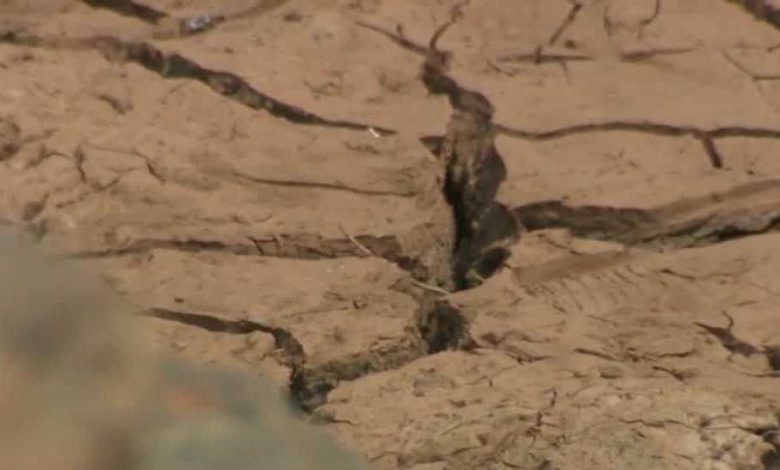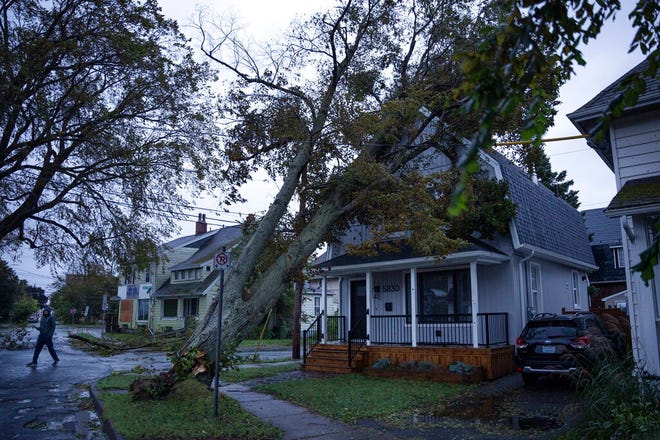
The word "megadrought" isn't new in the science community. It's been in use since the early 1990s. But new findings from research conducted at UCLA have the word making headlines in the Western U.S. this week.According to the study, the last 22 years are now the driest out of the last 1,200 years in the Western U.S. That kind of statistic has earned the last two decades the classification of "megadrought".But what does that mean?A megadrought is a period of 20 to 30 years where conditions are drier than average. There may be some wet years sprinkled in, but drought impacts remain throughout the period. These are much longer in scale than droughts you typically hear meteorologists talk about, which typically last months or years.Climate scientists can identify megadroughts using tree ring data that stretches back over a thousand years.“Every year a tree grows an annual growth ring and in a wet year, the ring will be really wide because the tree grows a lot," said Park Williams, one of the study's authors. "In a dry year, the tree grows a little bit because it’s really dry.”Those rings reveal patterns that climate scientists can use to track megadroughts. They have identified four of them in the Western U.S. since the year 800. They all range between 23 and 30 years in length but vary in severity. Each megadrought ended with a 10-to-15 year period of wetter-than-average conditions, showing evidence of natural climate variability over long timescales.But that natural cycle is likely trending drier in both droughts and rainy periods because of human-caused climate change. Increasing levels of atmospheric carbon dioxide from human activity are causing Earth's average temperature to rise. As the atmosphere warms, it pulls more moisture out of the ground, exacerbating drought conditions and making rainy periods weaker and further between. So while this latest megadrought cycle is expected to end in the next five to 10 years, the wetter period that follows may be less pronounced than in previous cycles.Watch the video above for the full story.
The word "megadrought" isn't new in the science community. It's been in use since the early 1990s.
But new findings from research conducted at UCLA have the word making headlines in the Western U.S. this week.
According to the study, the last 22 years are now the driest out of the last 1,200 years in the Western U.S. That kind of statistic has earned the last two decades the classification of "megadrought".
But what does that mean?
A megadrought is a period of 20 to 30 years where conditions are drier than average. There may be some wet years sprinkled in, but drought impacts remain throughout the period. These are much longer in scale than droughts you typically hear meteorologists talk about, which typically last months or years.
Climate scientists can identify megadroughts using tree ring data that stretches back over a thousand years.
“Every year a tree grows an annual growth ring and in a wet year, the ring will be really wide because the tree grows a lot," said Park Williams, one of the study's authors. "In a dry year, the tree grows a little bit because it’s really dry.”
Those rings reveal patterns that climate scientists can use to track megadroughts. They have identified four of them in the Western U.S. since the year 800. They all range between 23 and 30 years in length but vary in severity. Each megadrought ended with a 10-to-15 year period of wetter-than-average conditions, showing evidence of natural climate variability over long timescales.
But that natural cycle is likely trending drier in both droughts and rainy periods because of human-caused climate change. Increasing levels of atmospheric carbon dioxide from human activity are causing Earth's average temperature to rise. As the atmosphere warms, it pulls more moisture out of the ground, exacerbating drought conditions and making rainy periods weaker and further between.
So while this latest megadrought cycle is expected to end in the next five to 10 years, the wetter period that follows may be less pronounced than in previous cycles.
Watch the video above for the full story.
Source link









